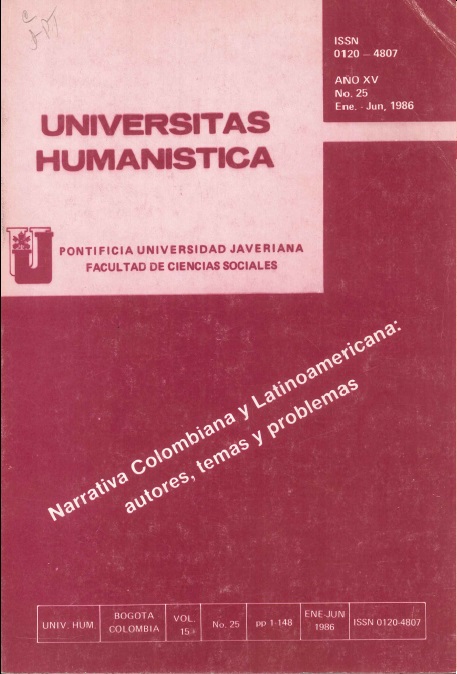Abstract
Los fundamentos de este trabajo se encuentran en el estudio por separado de cad> uno de los cuentos que integran la colección Tiempo de sequía; segundo libro del escritor Manuel Mejía Vallejo, publicado en Medellín en 1957. Son doce textos aparecidos previamente en periódicos y revistas: "Al pie de la ciudad", "Caballo para toda la eternidad", "El milagro", "Tiempo de sequía", "Los Julianes", "Luna de tiempo seco", "La muerte de Pedro Canales", "Un fantasma para Diógenes", "La guitarra", "Palo caído", "Una canoa baja el Orinoco" y "Miedo". Doce textos que en sus constantes y diferencias significativas permiten la percepción de un nuevo espacio que supera el de cada cuento aislado. Inicialmente se comprende la estructura significativa de "El milagro" y luego se relaciona con "Miedo" para aumentar nuestra primera percepción y para captar aquello que estando presente en los dos textos, los supera: La toma de decisión.
This journal provides immediate open access to its content on the principle that making research freely available to the public, encourages greater global exchange of knowledge.
The journal Universitas Humanística is registered under a Creative Commons Attribution 4.0 International Public License. Thus, this work may be reproduced, distributed, and publicly shared in digital format, as long as the names of the authors and Pontificia Universidad Javeriana are acknowledged. Others are allowed to quote, adapt, transform, auto-archive, republish, and create based on this material, for any purpose (even commercial ones), provided the authorship is duly acknowledged, a link to the original work is provided, and it is specified if changes have been made. Pontificia Universidad Javeriana does not hold the rights of published works and the authors are solely responsible for the contents of their works; they keep the moral, intellectual, privacy, and publicity rights.
Approving the intervention of the work (review, copy-editing, translation, layout) and the following outreach, are granted through an use license and not through an assignment of rights. This means the journal and Pontificia Universidad Javeriana cannot be held responsible for any ethical malpractice by the authors. As a consequence of the protection granted by the use license, the journal is not required to publish recantations or modify information already published, unless the errata stems from the editorial management process. Publishing contents in this journal does not generate royalties for contributors.


